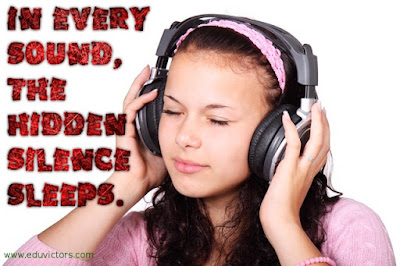SOUND
Question Bank
Following questions have been asked in previous CBSE examination papers.
Q 1: Define frequency of a wave.
Q 2: Give a relation correlating sound velocity with its frequency and wavelength.
Q 3: What is SI unit of frequency?
Q 4: What is the true meaning of amplitude of a longitudinal wave?
Q 5: How is frequency of a wave related to its time period?
Q 6: On what factors does the loudness of a sound depend?
Q 7: Which sound has higher energy, a loud sound or a soft sound?
Q 8: On what factors does speed of sound in a medium depend?
Q 9: Define echo.
Q 10: What is reverberation of sound?
Q 11: What is audible range of sound?
Q 12: The word SONAR stands for 'Sound Navigation and Ranging'. What is the meaning of the term 'Ranging'?
Q 13: What types of waves are produced in a slinky and in the strings of violin?
Q 14: When the write of a guitar is plucked, what types of waves are produced in
(i) air,
(ii) wire?
Give reasons in support of your answer.
Q 15: Draw a diagram showing sound propagation in air as density or pressure variations. Also show the amplitude(A) and wavelength(λ)in the diagram.
Q 16: Draw a diagram depicting low pitched sound and high pitched sound. What is the main difference between the two?
Q 17: Draw a diagram depicting soft sound and a louder sound. What is the main difference between the two?
Q 18: Find an expression for time of echo.
Q 19: A person clapped his hands near a cliff and heard the echo after 3 s. If the speed of sound be 350m s-1, then find distance of the cliff from that person.
Q 20: What is SONAR? Write two uses of SONAR technique.
Q 21: What is reverberation of sound? What is its cause?
Q 22: What arrangements should be made in an auditorium to control excessive reverberation?
Q 23: Why are ceilings of concert halls and conference halls made curved? Explain by giving a diagram.
Q 24: (a) What is the large of frequencies associated with
(i) infra sound, and
(ii) ultra sound?
(b) Which has shorter wavelength-infrasonic or ultrasonic?
Q 25: A nail was gently touched by the hammer and then was hit harder.
(a) When will be the sound created louder?
(b) Which characteristic of sound here is responsible for change in sound?
(c) Give the SI unit of loudness.
Q 26: A tuning fork is producing sound.Prove with an activity that sound is produced by it due to vibrations.
Q 27:Which part of the following musical instruments vibrate to produce sound?
Sitar,Harmonium,Flute,Tabla,Drum,Piano,Guitar,Shehanai,Violin,Veena,Mouth organ.
Q 29:Define three characteristics of a musical sound. On which factor do they depend?
Q 30: Establish a relation between wavelength,frequency and speed of sound in a medium.
Q 31:Compare the frequencies of note A and C played during a musical concert when the speed of sound is 340m/s and wavelengths of A and C are 1.5 m and 1.33 m respectively.
Q 32: A stone dropped from the top of a tower 78.4 m high splashes into the water of a pool near the base of the tower. When is the sound of splash heard at the top? Given that the speed of sound in air is 344 m s-1 and g=9.8 m s-2.
Q 33: A hospital uses an ultrasonic scanner to locate tumours in a tissue. What is the wavelength of ultrasound in a tissue in which the speed of ultrasound is 1.5 km s-1? The operating frequency of the scanner is 4.0 MHz.
Q 34: Describe an activity to demonstrate formation of a longitudinal wave in a slinky.
Q 35: 20 vibrations are produced in a slinky in 10 seconds when a jerk is given to it. Find its time period and frequency. How can a longitudinal wave be produced in that slinky?
Q 36: Distinguish between longitudinal and transverse waves. Give one example of each.
Q 37: Distinguish between echo and reverberation of sound.
Q 38: Give reasons for the following:
(a) The sound of a thunder is heard a little later than the flash of light is seen.
(b) The ceilings of the concert hall are curved.
(c) Some animals get disturbed before the earthquakes.
Q 39: What is a SONAR? For what it is used? Explain in brief its working.
Q 40: A ship sends out ultrasound produced by transmitter that returns from the sea bed and detected after 3.42 s. If the speed of ultrasound through sea water is 1530 m s-1,what is the distance of the sea bed from the ship?

answers??
ReplyDelete